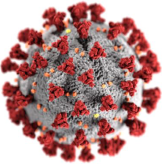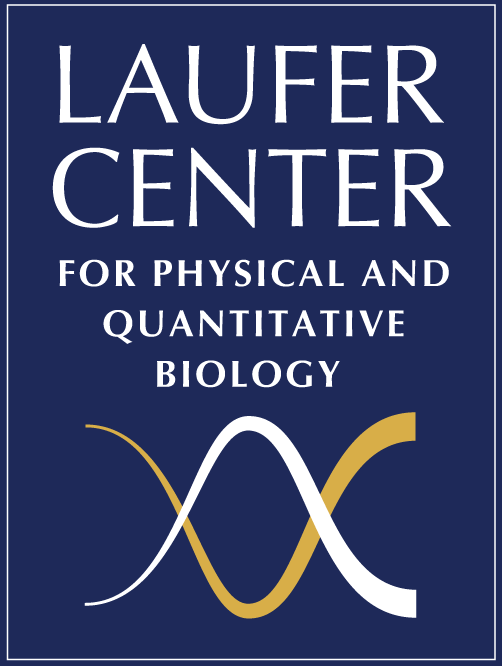COVID-19 VIRUS
Mechanistic Computer-Aided Drug Discovery
The challenge: The molecules of the virus

We study the actions of the molecules of the SARS-CoV-2 virus by computer modeling. A SARS-CoV-2 virus uses surface glycoprotein molecules (the spikes) to invade your cells. Then the virus inserts its one large RNA molecule — its blueprint for reproducing itself — into the cell. The cell copies the RNA to make the 29 different proteins the virus needs to multiply. Each protein has a unique folded shape. Knowing those shapes is a first step in drug discovery.
Computer modeling helps in drug discovery
Computing helps us learn protein shapes; to learn how those shapes change in actionable ways; and to find chemicals that inhibit or activate the viral molecules.
Modeling: Beyond structures to mechanisms
Some modeling learns how proteins look, rather than how they act. It seeks the shape of an unknown protein from shapes of known ones, or seeks the fit of a drug into a protein site from other known complexes. But, discovery requires much more. We need to know protein actions, mechanisms and binding affinities. We need modeling of ensembles, motions, forces and free energies. Physics-based methods, such as Molecular Dynamics (MD) give these, but often at prohibitive computational expense. This is where we come in. We’ve built a team, and physics-based methods, that — combined with extensive supercomputing — allow us to go after biological mechanisms.
We bring state-of-the-art modeling

We are 5 faculty research groups, led by Ken Dill, Dima Kozakov, Carlos Simmerling, Vageli Coutsias and Rob Rizzo in the Laufer Center at Stony Brook University, and John Van Drie, a 25-year leader of industrial Computer Aided Drug Design (CADD). We are experts in protein structures and shapes, their motions and actions, the discovery of drugs that bind to them, the binding of proteins to other proteins, and protein motions, loops and macrocycles. Combined, we have more than 100 years of research experience, more than 500 publications, and more than a dozen collaborations with industry. We are among the leading physical-modeling competitors in the international communal blind competitive events, CASP, CAPRI and D3R.
We invite collaborations
If you are working on molecular mechanisms or drug discovery for SARS-CoV-2, maybe we can help. These pages describe our methods and internal projects. And, we seek experimental collaborators or contributors of GPU computing or other resources.